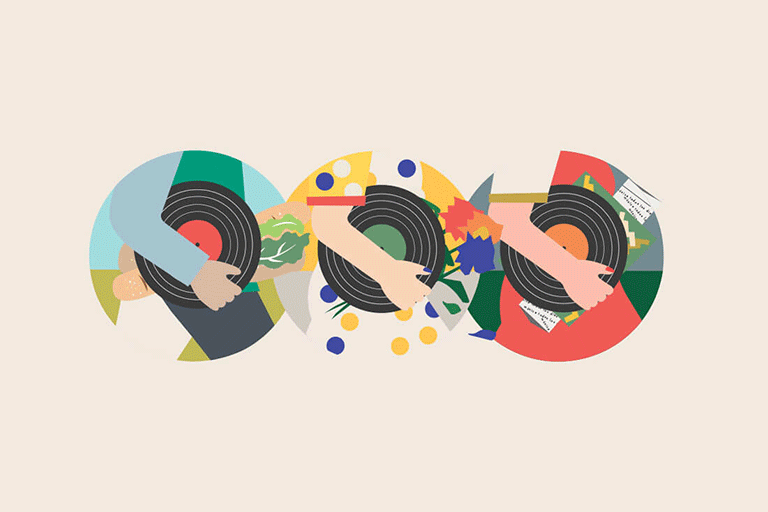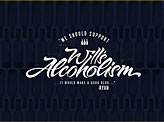Trends never truly die, they are simply recycled. This is true for the world of fashion, music, and graphic design as well. These days, nostalgia is a rather potent tactic used by artists and marketers alike. This is why you will find that a number of graphic designers are using retroelements in their work.
Of course, you needn’t have lived through the 70s and 80s to know that things were just a little too bold and loud back then. In the past few decades, minimalism has become an important component of modern life. As such, graphic designers are having to create a fine balance between older elements and newer ones. Thus, modern retro was born!
If you haven’t had too much experience with this concept, however, you may be unsure of how to proceed. In this case, here are all the tips and tricks that you need to know to get this vibe just right:
Begin with Retro Colors
If you were to take a look at the clothes in the 80s, for instance, you would notice that the colors were bold and brash. When it came to artwork, however, it was the exact opposite. Here, the colors were neutral, with a heavy focus on beige, cream, and other earthy shades.
Another thing you would notice is that these colors appear muted, almost flat – they don’t exactly leap off the page. At the same time, the one thing that these past decades weren’t worried about, however, was clashing. You would often find that artists would use rather old color combinations together.
This is a concept that you can incorporate into your own designs more subtly. For instance, you can select several different shades that complement one another. This way, while there will be variation, the hues will blend well enough to suit the modern minimalist.
Create Texture with Proper Use of Shapes and Colors
It is important to keep in mind that printing methods several decades ago weren’t all that great. As such, if you wanted objects to be easily discerned from one another, you had to make sure you were creating a good contrast.
Naturally, print quality isn’t something you have to be concerned with these days. Even so, it is a good idea to use some of the retro techniques employed way back when. A great way to do this without going overboard with the effect is to create flat shapes and use bold colors.
This way, you can keep your designs as simple as possible. It isn’t really necessary to create shadows or have to focus on features all that much. Instead, you use different colors to create the contrast here, automatically adding texture where needed.
Use Old Photos for Authenticity
You don’t need to be told that a picture is worth a thousand words. Particularly when it comes to the retro trend, it doesn’t get more authentic than a photograph. Sure, you can try to recreate a particular image to a tee, but why go through all that trouble?
To give your graphics a feeling of true authenticity, try and use a photograph taken in another era. You can use one from your own collection or may be able to find one on a stock photo website. Of course, you will have to contend with the fact that these images may not boast the greatest quality.
Fortunately, in this high-tech age, the problem can easily be solved. This can be done by sending in the images to a service such as instarestoration, which will restore the pictures to their former glory. If it is a black-and-white photo, then you can colorize it. This way, it will have a retro feel to it but the colors will create a modern element.
Another cool way to introduce a modern element is with a more modern font. This means keeping the font more minimalistic, with very little flair. Or, pick a font that is sophisticated and understated. This will work especially well with photos with a lot of bold points.
Use Technology as a Backdrop
It turns out that people in the past decades were just as obsessed with technology. In fact, you could probably say that they were even more caught up in tech trends, imagining devices that we would now scoff at.
As technology was so important to people in the 70s, 80s, and beyond, they used its likeness in much of their artwork. Therefore, this is something you can include in your designs as well. A particularly interesting task would be to recreate old designs as 3D concepts.
Keep in mind, many people came up with concepts and ideas that never actually came to fruition. Thus, you may want to dig around for these designs. Then, draw 3D versions of them and add modern colors. The more realistic you can make these devices look, the better.
This tactic is the perfect way to bridge the gap between the old and the new while still keep the main elements separate. What’s more, it will be an incredibly fun concept to bring to life.
Creating the Balance
When you incorporate retro aspects into your design, it is easy to go overboard. However, when you cross this line, you are merely recreating a retro concept – there is no modern aspect to it. This is why you should always keep things in perspective.
One way to do this would be to ask yourself how a particular design would play with a modern audience. Will it seem like a rip-off from another era or will it be palatable enough to stand next to other kinds of artwork that have considered this combination of eras?
These are all the ways you can introduce a modern retro concept in graphic design. You may not be able to get a handle on these elements right away. However, with a little research and some practice, you will be able to put together quite a display. It will have nostalgic components while still maintaining its contemporary feel.












